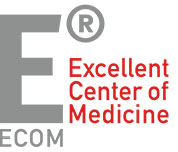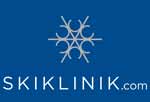| Rotator Cuff Rupture |
|
General points for the rotator cuff – aims of the treatment
|
The rotator cuff consists of four tendons which lie next to one another and pass within one another, and which pull from the shoulder blade to the humeral head. With the occurrence of an accident or also through increasing wear and tear due to greater pressure, a tear of one or more tendons can occur.
The aim of the operative treatment is the recovery of strength and movement, as well as the elimination of pain. Depending on the demand for activity, a non-operative treatment attempt consisting of physiotherapy and anti-inflammatory therapy can be undertaken. Should the complete function not be regained or should there be remaining pain or restriction of function, the operative procedure is based on the individual circumstance. Depending on the localisation, extent and age of the tear, a suturing or re-fixation of the tendon of the upper-arm bone in arthroscopic or "mini-open" technique will be undertaken. If it is not possible to arthroscopically suture the tear due to the size of the defect or the quality of the tendon, an open procedure must be undertaken instead. If a torn tendon has been pulled back so far, that it can no longer be fixed to the humeral head and if the accompanying muscle has also been receded, it can be replaced by means of a muscle tendon transfer. In addition, the space under the roof of the shoulder will be widened (acromioplastic), because otherwise the site of suturing under the roof of the shoulder will be worn away and the danger of a new injury would rise.
|
Course of the treatment
|
The duration of hospital stay for an arthroscopic or open suturing of the rotator cuff lasts approximately 3-5 days.
|
Aftercare
|
After a rotator cuff reconstruction a short-term immobilisation in a tubular bandage for approx. 2 days is necessary. Afterwards, the arm is restrained in a special support cushion or a support sling for a further 3 weeks. In order to ensure optimal healing and regeneration, an intensive phase-adjusted physiotherapy is necessary. The healing of the tendon takes at least 12 weeks. It takes between 3 and 6 months, depending on the size of tear, until full function is restored.
|
Inability to work
|
A return to the working process after 3-6 weeks is realistic for office, management or other similar activities. For patients with heavy physical work the full rehabilitation time must be allowed. Driving can occur after 6-8 weeks.
|
Ability to do sport
|
Depending on the type of sport, sport-specific training is able to be undertaken after approx. 3 months. Before this point in time a control examination is necessary. This takes place in the form of a physical examination with an MRI control. Depending on how high the demands for function are, more thorough and careful rehabilitation should be undertaken in a specialised rehabilitation centre. Training methods and training programmes should be observed and carefully modified.
|
|
|
SPECIALISED ORTHOPAEDIC SURGERY, ARTHROSCOPY, SPORT TRAUMATOLOGY, AND REHABILITATION
Arabellastr. 17
81925 Munich
Germany
Tel: +49. 89. 92 333 94-0
Fax : +49. 89. 92 333 94-29
Diese E-Mail-Adresse ist gegen Spam-Bots geschützt, Sie müssen Javascript aktivieren, damit Sie sie sehen können.
Dr. Erich H. Rembeck
Impressions of the ER Centre for Sport Orthopaedics in Arabellapark.
>> Photo Gallery
|










